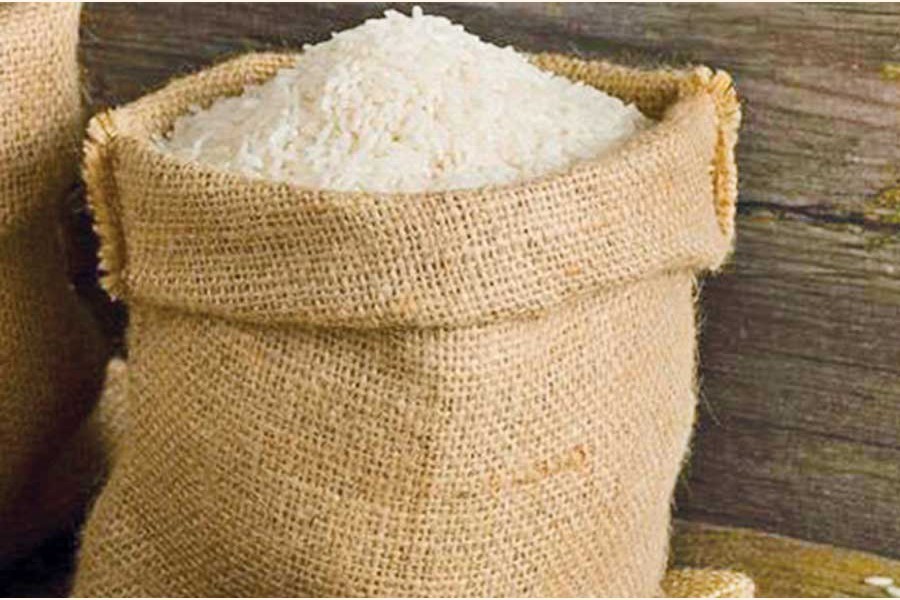
Published :
Updated :

Two government stalwarts, reportedly, engaged in a verbal duel over rice production in the country at a virtual event, held in Dhaka early this week. One claimed Bangladesh produced surplus food while the other suspected some problem with food production statistics.
The statistics available with various private and public organisations, including the Bangladesh Bureau of Statistics and the Department of Agricultural Extension (DAE) hold the second opinion right and trigger a few questions involving the claim of achieving self-sufficiency in food production.
Such war of words is nothing new. It had happened some years back between a former agricultural minister and a former food minister over rice production data.
A vernacular daily that has hit the newsstand only recently in a front-page story, published in its last Sunday's issue, raised a few questions about the validity of the official claim about surplus rice production in the country.
According to the BBS, the annual consumption demand for rice is 28 million tonnes in Bangladesh. The quantity is a bit higher, according to the private sector estimate, nearly 31 million tonnes. The official estimate shows the rice production during the last financial year at about 37 million tonnes, meaning a very healthy surplus of 6.0 million tonnes.
This surplus is supposed to make the country an exporter of rice. But, in reality, the opposite has happened. Bangladesh continues to be a net importer of rice. It imported nearly 1.8 million tonnes in the FY'21 in the face of an unabated rise in the prices of the main staple. The poor and low-income people faced unprecedented hardship amidst the pandemic.
Quite interestingly, the country imported a paltry quantity of rice---18,999 tonnes---in the previous FY when production of the item was less than 36.6 million tonnes. The rice market was also far less volatile then.
All these statistics do point to statistical errors either in production assessment or in the population census. With so much production abundance, the country does not need to import rice. It is also not that the people have started consuming rice in higher quantities because of the pandemic! The truth is the poor people are finding it difficult to arrange two square meals a day because of twin problems---loss of income and higher prices of rice.
Getting authentic and quality statistics remains a huge problem in Bangladesh. The government is the only source of statistics and the problem lies there.
As far as agricultural data gathering is concerned, a statistical officer of the BBS and an agricultural extension officer of the DAE at the upazila level are responsible. The BBS official is required to gather data relating to a variety of sectors and agriculture is one of them. The DAE official is dedicated to only agricultural issues.
Both the DAE and the BBS compile data on agriculture based on information sent by their upazila-level officials. So, everything depends on the sincerity and integrity of officials concerned in carrying out the job.
It is also hard to rule out the propensity among a section of high officials or policymakers to manipulate data to show their achievements. Self-sufficiency in food production has always been a cherished goal of the nation and the powerful people have always tried to play with people's emotions over this issue.
Given the soaring prices of rice in recent months and the government's desperate bid to import rice to cool off an overheated rice market, the official data concerning rice production in the country deserve proper scrutiny. The millers are squarely blamed for the increase in prices. Before dealing with that allegation, it is also important to get the rice production data right.
The question is: how to go about it?
The government can know about the rice stocks with millers. But gathering data on the food stocks with every household across the country is just impossible.
Aerial reconnaissance remains the most viable option to know about the acreage under three rice crops in a year. The US Foods and Agricultural Department (USFDA) could be helpful, to some extent, since it gathers data using the satellite. Since per-acre yield varies from one area to another, getting the actual production data will be a difficult job.
Yet the government might try collecting sample data district-wise, employing private sector manpower. The job could be outsourced as well.
Food security is an important and sensitive issue. The government cannot overlook it. To ensure food security, the policymakers need to know how much each of the food crops the country produces with rice figuring at the top of the list. The data compiled by the BBS and the DAE vary and that is quite natural since the two departments do not employ an identical system in data collection. It would be proper on the part of DAE to improve its data collection system and the presentation of the same in the right perspective.
zahidmar10@gmail.com


 For all latest news, follow The Financial Express Google News channel.
For all latest news, follow The Financial Express Google News channel.